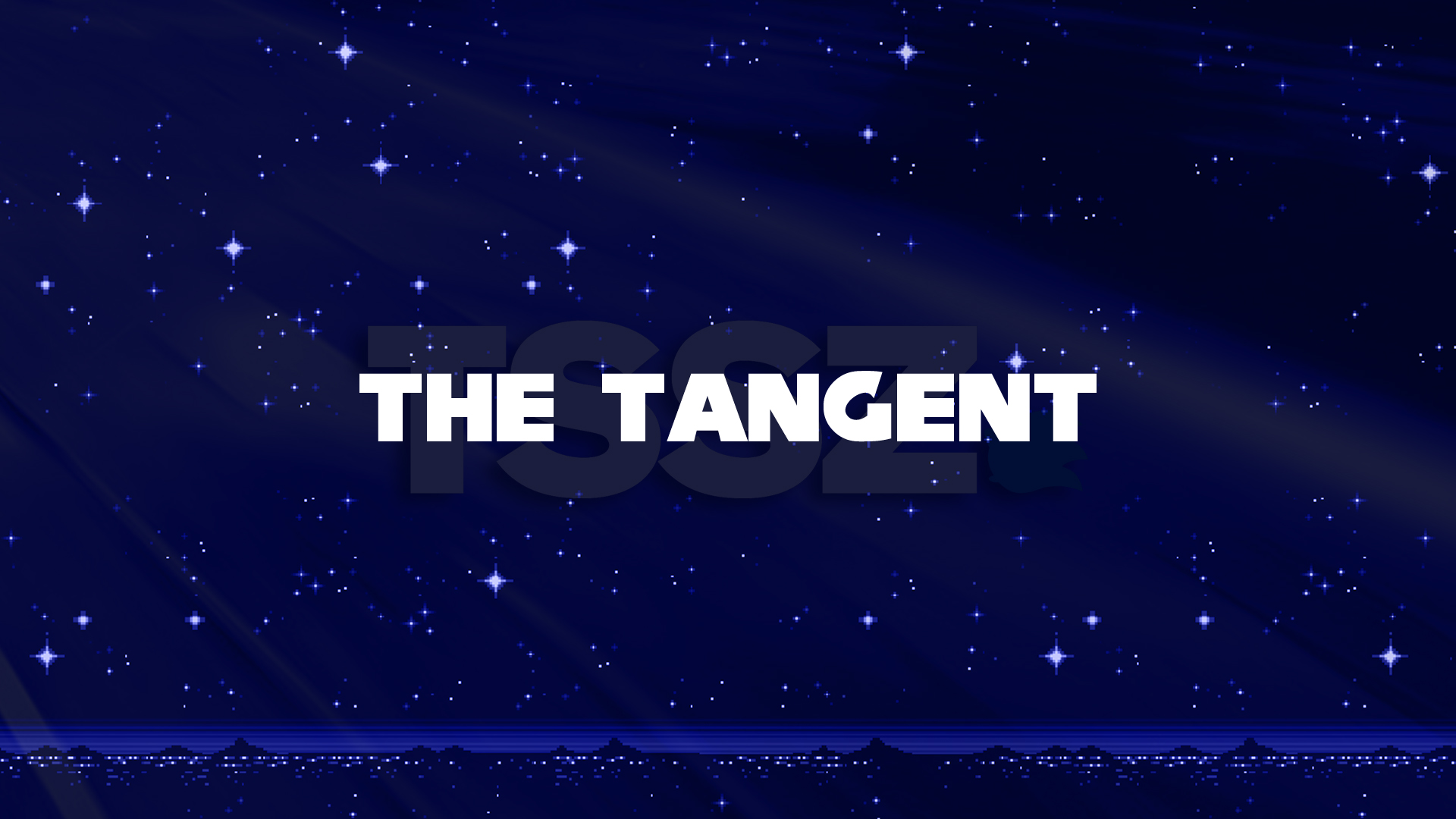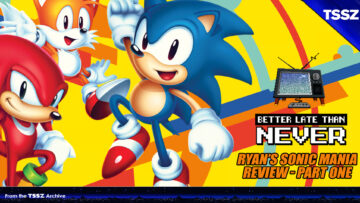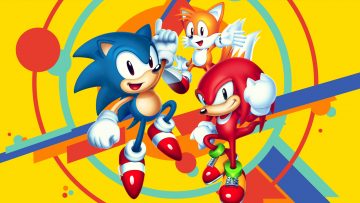
The Tangent: A Kart Apart
If you were a part of gaming in the mid-90’s, there’s a little part of you that cringes every time you hear the phrase “kart racer.” There was a time when any and every series decided they too needed to motor around in comical vehicles that spewed destructive traps across the raceway. Think I’m kidding? Here is a lengthy list of examples, and this list separates out the ones that focus more on the combat aspect, Twisted Metal-style, like one where professional wrestlers shoot laser-guided rockets at each other. Only The Undertaker should get gimmicks like that, I say. There were some games that stood out on quality, like Crash Team Racing, and then, there was Star Wars: Super Bombad Racing. Watching that trailer, you actually get the feeling that it’s trying to suck out your soul.
The genre was truly popularized by Super Mario Kart, although whether or not it was the first, that could lead to a pretty complicated argument. Either way, the Mario Kart framework is the one that endured, and most wacky races draw heavy inspiration from it. Sega’s newest mascot racer, to no one’s surprise, works from that 18-year-old foundation once more, and many previews and reviews have been quick to bring that up. A jumbled mix of iconic characters in colorful vehicles speed down quirky tracks with thematic hazards, picking up power-up icons and shooting weapons at their rivals to gain an advantage. In addition, charging up power slides for mini-boosts is also a familiar mechanic. Even the aerial trick system used to gain boost was in Mario Kart Wii prior, however there’s no way you could argue that was the first racer to include such a system; even Nintendo’s own Excite Truck employed it to heavy effect a year and a half beforehand.
So, the comparisons are obvious, but are they really fair? There’s something you have to understand about Nintendo, and it’s that they’re extremely good at thinking things out to a logical end, often years before most of their competitors get there, at least publicly anyway. A lot of their innovations answer indirect long-term problems with a design. For example, adapting a generic racing engine to feature hit Mario characters is a good idea, but it becomes a problem if it stays only about the racing in the end, giving fans of the Mario series no way of breaking into a game purely about driving skill. Particularly when the friends they play against may have already mastered a number of racing games, and can simply recycle the same skills. Not only that, but in a tough race with the CPU, it can be frustrating to do nothing but watch them from behind lap after lap, unable to overtake them no matter how well you drive as they follow a perfect line around the stage.
With that frustration in mind, the weapons system became a significant key to the kart racer structure. Items that let the racers attack the others in comical ways, with small to large set-backs, means that a victory is not always assured, and a loss is not always inevitable. Later games did more to balance the item output so that last places received more favorable items, to the unfortunate boom of the Blue Demon. But once your racing game includes items like this, it’s difficult to separate yourself from the perception of being just another Mario Kart knock-off.
As I said above, these and other ideas are often very logical answers to important issues, and so it’s hard to fault games for following the same basic schema. It’s important they understand why those mechanics are in place, though, and not just try to mimic them without a clear grasp of what they’re supposed to accomplish. Super Mario Bros. for the NES was a huge list of very careful choices meant to work with the player’s psychology. Why Mario walks to the right, why the first block structure is laid out like it is, these aren’t accidents or inconsequential. Post-SMB, there were a lot of games trying to mimic its success, but many of them tried to ape the final game without working backward to understand why SMB worked so well for new gamers. The same thing happened with the kart market, and that’s why most gamers view entries under a negative light if they aren’t Mario-branded. Because most kart racers try to be Mario Kart, all are compared to it, and many are seen unfavourably for it; even if they stand as good games on their own.
Does Sega’s game follow the Mario Kart model? It does, but it didn’t exactly start that way. Initially the game was a pure racer, with items added at Sega’s suggestion, the type of suggestion a developer doesn’t usually get to ignore. But even with that, it characterizes itself well enough to stand out, not just as another me-too copy-kart, but as an echo of the great Sega racers of the past, with more complicated mechanics shrouded under the simple exterior. It takes a lot of skill to pull something like that off, for which Sumo Digital should be commended.
I say should, because that respect was declared null and void when they didn’t include Segata Sanshiro among the cast. Letting ridiculous things like licensing and actor fees and budgets get in the way, the cowards! Segata does not smile upon thee. Or at all, for a matter of fact.
This post was originally written by the author for TSSZ News.






Nice article! I enjoyed reading it.
I agree Sumo did a great job, but not respecting them because of licensing issues? come on now =P that would be SEGA’s fault, not Sumo’s. SEGA is the one paying for the development of the game, Sumo is just developing it.
Thanks, and don’t worry, it’s just a joke. I wanted to work in a way to compliment them for Ryo’s inclusion during the Segata comments, but couldn’t find a place for it.
Considering Sumo had 5 versions of the game to make, and such limited funds and time, I won’t mind recycled clips and other little things like that. (please, no Sonic clips for Shadow this time, though!) They made somethingthing solid which is very comparable to Mario Kart, without completely ripping off from it. Infact, they made it better with much more balance in item usage and more reliance on skill to get you to the finish than what we see in games like Mario Kart Wii. Give these guys a medal, they deserve it.
Gold medal for S&SASR the second place goes to Crash Bandicoot racing game on the ps1 and third place goes to mario kart, even though if you consider mario better than Crash, but Sonic&Sega are the gold medallist, S&SASR is the best racing game ever 🙂 followed by Sonic R 😀 (or maybe Sonic R, we’ll see9 😀